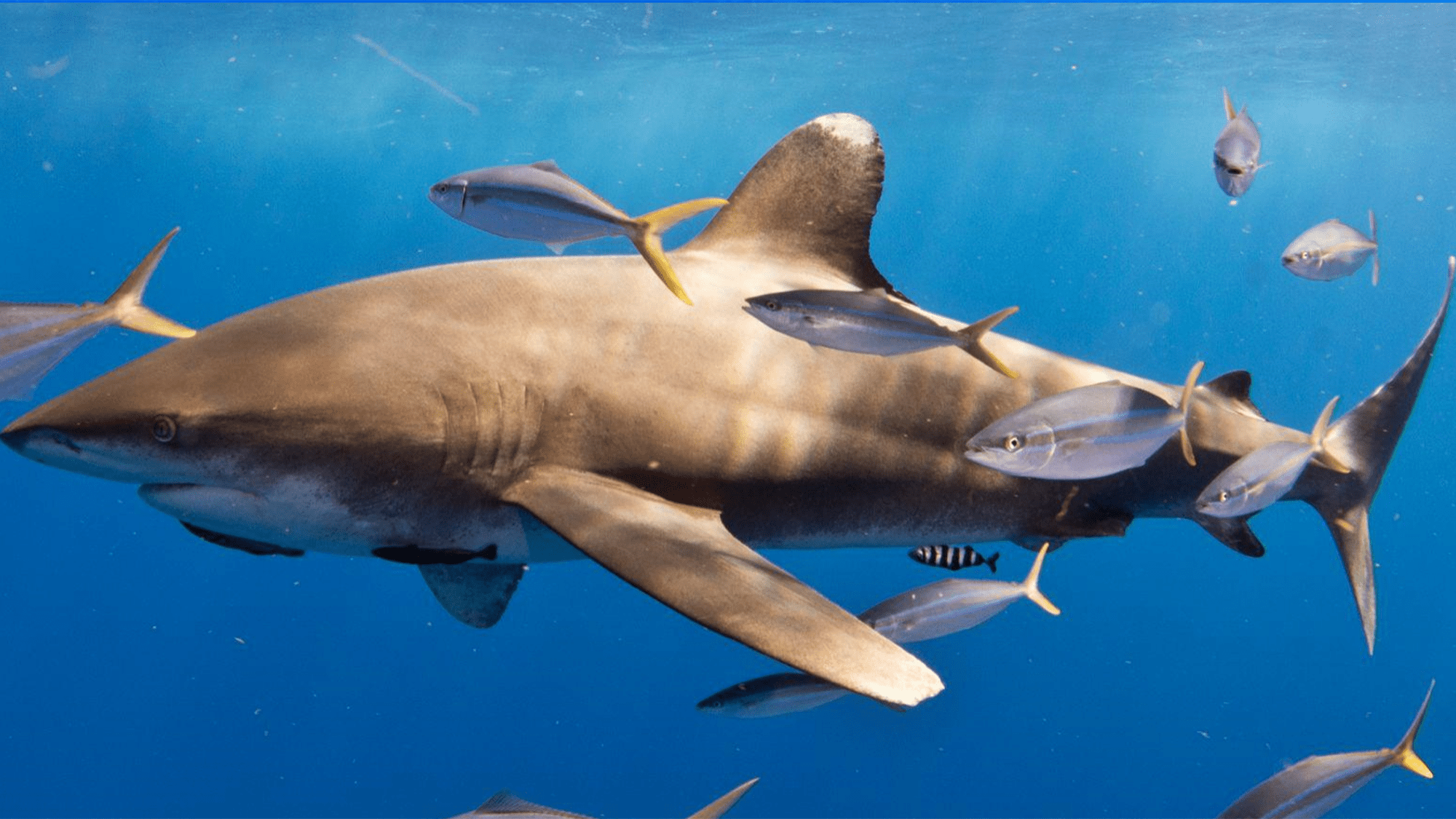
CREDIT: Kayleigh Grant.
Get the Popular Science daily newsletter💡
Breakthroughs, discoveries, and DIY tips sent every weekday.
Of the over 500 known shark species, many of these giant fish are hunters and not scavengers–particularly those found in the open ocean. White sharks (Carcharodon carcharias) ambush their prey from below and even sharks closer to shore like reef sharks are known to chase their prey into smaller crevices before eating them. Yet a small portion of the diets of most sharks still comes from picking apart already dead animals. Sometimes, these usually solitary hunters will even scavenge in groups.
In a study published May 29 in the journal Frontiers in Fish Science, a team from the University of Hawaiʻi at Mānoa describe an unusual aggregation of sharks coming together to feed on a decaying carcass of an unidentified animal.
“To our knowledge, this is the first study to document a feeding aggregation of tiger sharks and oceanic whitetip sharks scavenging concurrently, and peacefully, on a carcass,” study co-author Molly Scott said in a statement. “These species are rarely seen together in the wild because of the vastly different habitats they occupy.”

Unusual group feeding
Oceanic whitetips (Carcharhinus longimanus) are a highly migratory and threatened species of shark. They grow to an average of 6.5 feet long, spend most of their time roaming the oceans alone. Their preferred habitat in the open ocean make them difficult for biologists to study, but they do aggregate near Hawai’i’s Big Island during the spring and summer months.
Tiger sharks (Galeocerdo cuvier) are slightly bigger at about 10 to 13 feet long. They are also more coastal and like true locals, live in the waters around the Big Island all year round.
“It is incredibly rare for these two species to overlap in space and time,” Scott said.
In April 2024, a tourist boat spotted a heavily decayed carcass about 6.2 miles off the west coast of Big Island. The spectators on board observed the feeding event for 8.5 hours, spotting at least nine oceanic whitetip sharks and five tiger sharks.
“Even though up to 12 individual sharks were feeding intermittently from a very small, highly degraded carcass we did not observe any agonistic inter- or intra-species aggression,” Scott said. “This was surprising to me; I would assume some agonistic behaviors would exist when there are that many sharks attempting to feed around such a small carcass. But it seems all individuals knew their place in the social hierarchy.”
Matters of size
Most likely due to their larger size, tiger sharks were the more dominant species during this group scavenge. All of the tiger sharks–except one smaller female–and the two largest oceanic whitetips were more frequently observed feeding directly on the carcass.
The smaller sharks primarily stayed under the surface, feeding on scraps of flesh drifting away. These sharks were potentially attracted to the scene by scraps and regurgitations left behind by the larger tiger sharks, according to the team.
Additionally, there could have been some other reasons behind which sharks got the first bites of food.
“Some individuals, like the female tiger shark, may have been shier or less bold, likely again due to her size. Also, with the other sharks having established the feeding hierarchy before the female tiger shark arrived, maybe she didn’t feel too welcome to get in on the action,” Scott explained.
[ Related: Whale shark pre-mating ritual observed for the first time. ]
Fresh perspectives
One of the limitations to this particular study is one that often occurs in moving bodies of water. The carcass could not be located again the next day, so the study was conducted over a short period of time. Despite this, the team believes that considering the size of the carcass and the number of sharks present, this research could provide new insights into relationships and social interactions between shark species that don’t typically inhabit the same waters.
It also can offer a new perspective on sharks for us humans, as they are not the mindless maneaters they’ve been made out to be.
“There were between two and three humans in the water at all times filming more than 12 sharks feeding. None of the photographers reported any scary, aggressive, or harmful interactions with the sharks,” Scott concluded. “I hope this provides a new perspective that sharks are not the human-eating predators they are made out to be.”

More deals, reviews, and buying guides
The PopSci team has tested hundreds of products and spent thousands of hours trying to find the best gear and gadgets you can buy.
























